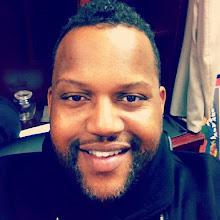
In the black-and-white photo, a boy of about 10 peers into a rustic building through a slot between weathered boards. He may not know it, but that narrow opening is a window on a century of history.
That history and how it continues can be seen in “This Far by Faith: Carolina Camp Meetings, An African-American Tradition.”
The photo and video exhibition at USC’s McKissick Museum is the culmination of a dozen years’ work by Minuette Floyd, an associate professor in the USC art department. But for Floyd it really began much earlier, when her family began taking her to the weeklong gatherings of faith, family and food.
“I could have been 3 or 4,” said Floyd, whose family lived near Charlotte. “I grew up going to several of the campgrounds.”
After moving away from North Carolina for school and work, she came to USC in 1996. Since she once again was close by, her brother asked her to come to a meeting.
“I was really just amazed how the grounds looked the same,” she said. “There were many of the same people. One lady was there selling snow cones who had been there since I was a little girl.”
The 42 black-and-white images, plus two videos, were taken at seven of the camps, including Camp Welfare in Fairfield County, St. Paul near Harleyville and Shady Grove near St. George. The others are in North Carolina. All were started between 1870 and 1880, just five to 15 years after slaves were freed.
At first the campers put up tents for the gatherings. Although they’ve been replaced with wooden buildings, cement block structures and in some cases travel trailers, they’re still called “tents.”
“I started going to all seven in 2001 and have been going back ever since,” Floyd said.
She still knew people who were at the North Carolina camps she attended as a child and was welcomed easily there — after all, she was part of the family.
At some of the other camps, she’d find someone who would introduce her and show her around. As they grew comfortable with her, the camera was little obstacle.
“I didn’t just drop in,” Floyd said. “Now I know them, and they know me.”
Reach Day at (803) 771-8518.
WHEN: 8:30 a.m.-5 p.m. Monday through Friday, 11 a.m.-3 p.m. Saturday, through March 14
COST: Free
INFORMATION: (803) 777-7251 or www.cas.sc.edu/mcks
Read the Rest of the Story Here.














